Saplings and Spikes
After a changeable bank holiday weekend, it was nice to see the sun in the sky as I joined the volunteers heading down to the Silk Wood planting area. Today’s task – to clear the knee-high thistles and bramble encroaching around the saplings planted this winter. This will make access easier for the returning groups who are spreading mulch around the trees, to help supress the competing plants and reduce the need for watering.
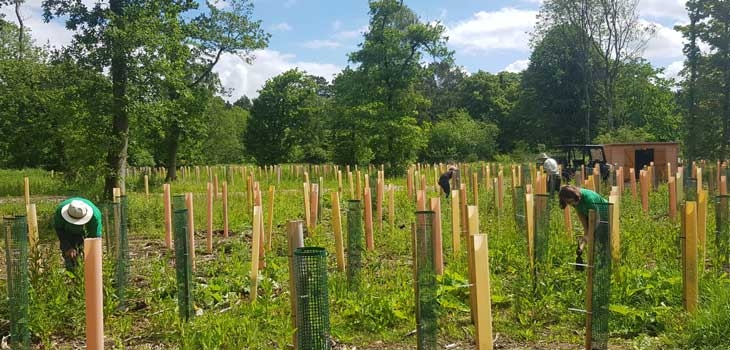
All hands on deck
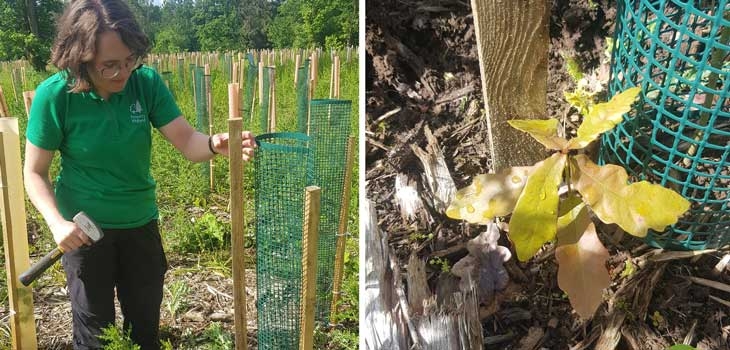
Staking a new oak sapling | A self-seeded oak sapling
Mattocks were handed out and safety instructions given before we headed into the forest of multi-coloured tree tubes. We had to clear a metre diameter around each tree by digging the thistles and bramble’s roots up so they didn’t return, but also taking care not to damage the more important woodland species amongst them – plants such as dog’s mercury and bluebell. These are known as ancient woodland indicators, as they tend to be slow colonisers, and show where woodland’s been present since at least the 17th Century.
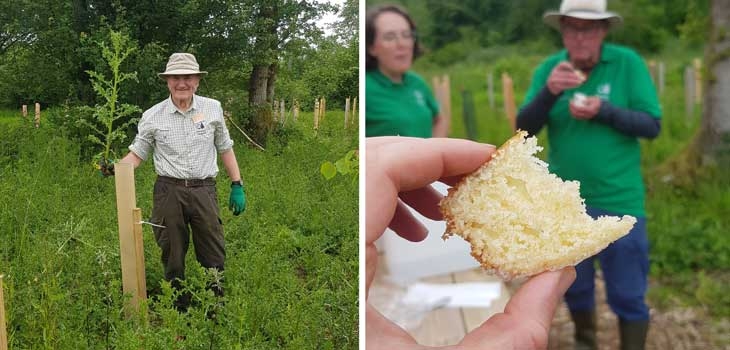
Volunteer Tim tackles the thistles | Lemon drizzle all round
Whilst clearing, it was interesting to find a few saplings which had self-seeded and grown right next to the trees in the tubes – this included several oaks, and a couple of hawthorns. This is a great example of natural regeneration, where these normally vulnerable saplings would be protected from browsing deer or rabbits by the spikey thistles and brambles that surround them. We made sure we marked the new saplings with stakes, and will protect them using tree guards - this is so they survive where we had to clear around the already planted trees.
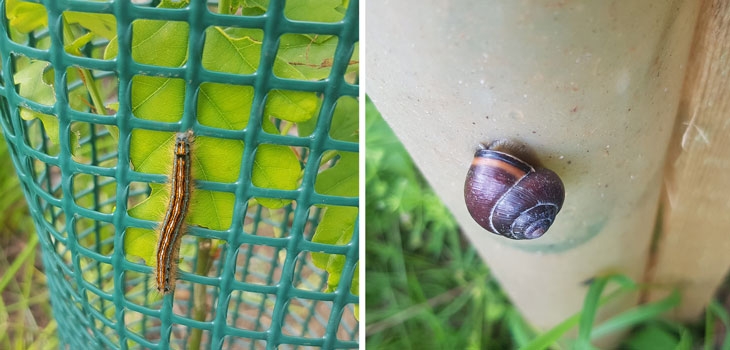
Lackey moth caterpillar | Brown-lipped snail
We also spotted a few wildlife species making use of the new woodland, including plenty of slugs, white-lipped and brown-lipped snails, millipedes, wolf spiders and even a beautifully colourful lackey moth caterpillar feeding on an oak sapling (one of its foodplants). It’s great to see the area alive with invertebrates, and shows just how important the woodland will be for nature when it matures. There was also some animal scat but we’re not sure what from – any ideas welcome in the ‘poo-dunnit’ mystery.
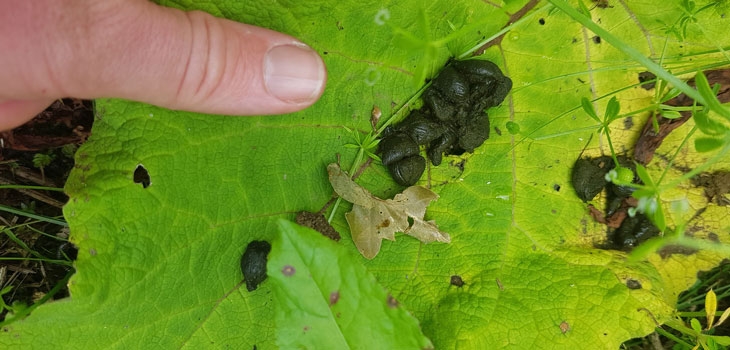
Poo dunnit? Size reference
By lunchtime we’d worked up quite a sweat, and were more than happy with the lemon-drizzle cake as reward for the thistles piled high. Heading back, we could all feel proud of the morning’s achievements which will ensure any future visiting groups don’t get a rather spikey reception!
